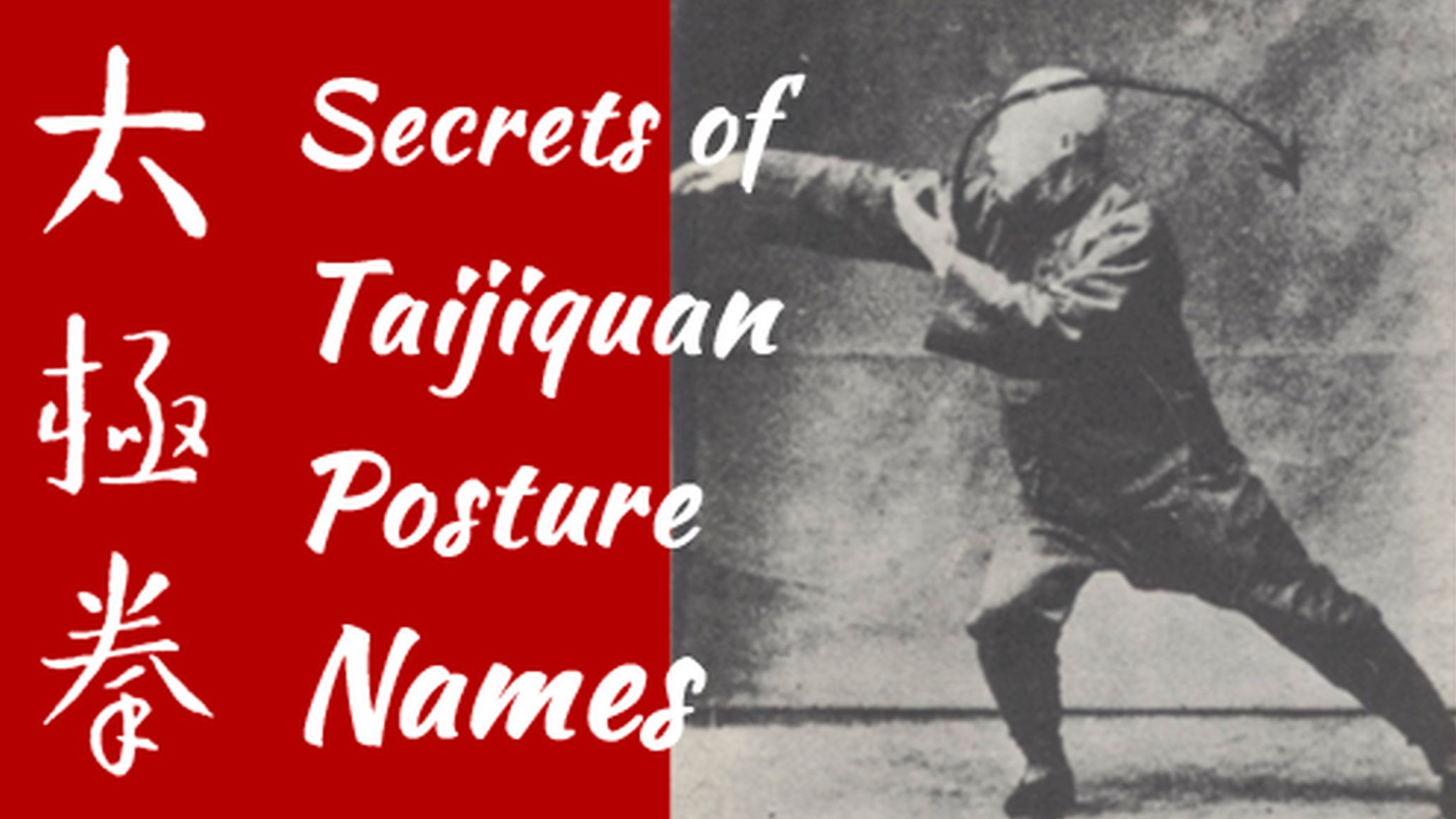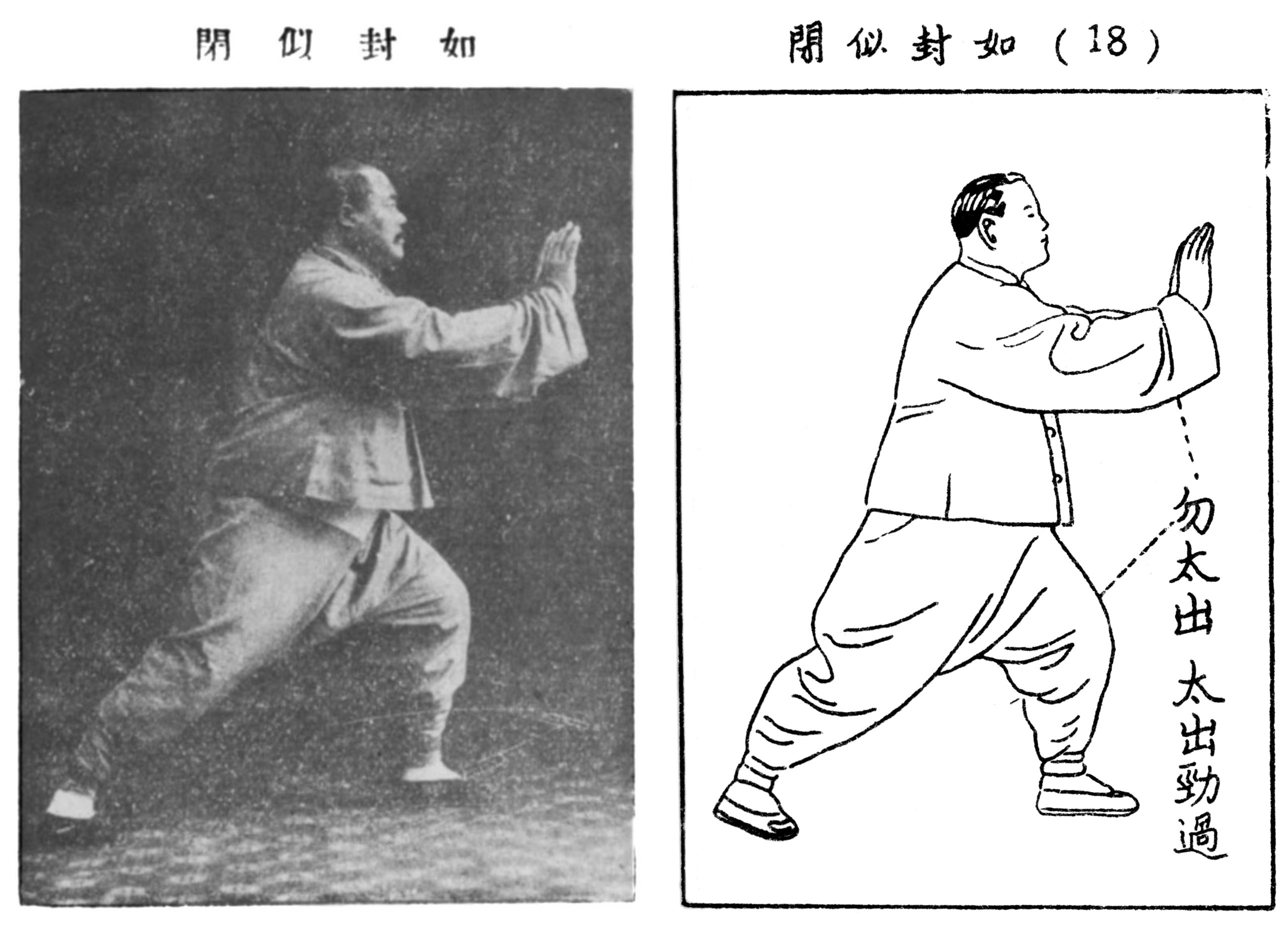
12: Following to Seal and Carrying to Close
Mar 17, 2023Copyright © 2023 by Stuart Alve Olson
This ongoing series presents the origin and more traditional meanings of Taijiquan posture names, movements, and applications. Each installment provides Master Xu Yusheng’s original text (1919), original photographs of Master Yang Chengfu, Master Chen Weiming (and disciples) and photographic record and drawings of postures from Chen Kung’s work (1936).
In 1919, Master Xu Yusheng (許禹生), an early student of the Yang family, published an incredible and informative book simply titled, Taijiquan (太極拳), 1919, one of the earliest literary records on Yang Style Taijiquan. Master Xu’s book appeared nearly twenty years prior to publications released by Chen Kung and the Yang family.
A portion of Master Xu’s book deals with the actual meanings of the Taijiquan posture names. He did this because the posture names during his time were just handed down verbally, and many pugilists were for the most part illiterate.
Therefore, depending on the dialect and tones uttered by the teacher, the true meaning of a posture name and use could be misunderstood by students. Master Xu then wrote a record to ensure that the posture names tallied with the actual postures, movements, and applications.
12) Following to Seal and Carrying to Close
如封似閉
Ru Feng Si Bi

Photograph of Master Yang Chengfu and the drawing is from Chen Kung’s work.
Alternate Translations: Master Liang termed this posture simply as “Withdraw (or Draw Back) and Push” (退按, Tui An), which in application are the two basic movements of the posture. But its full name was traditionally translated as “As If Sealing Off to Close.” Dr. Tseng translated it as “As If a Closing Action.” More poetically, and more accurately, it should be translated as “Following to Seal and Carrying to Close” (如封似閉, Ru Feng Si Bi).
Term Definitions:
Following to Seal (如封, Ru Feng) carries the meaning of “as if sealing off.” The character Ru, in the more traditional and older use, meant “to follow” or “to go with.” Therefore, the original meaning of this posture name, “Following to Seal,” was the more accurate translation and meaning, as the idea is to follow the opponent’s Push into your body, but then by turning out and attaching to the opponent’s elbow and wrist, the Sealing occurs.
Carrying to Close (似閉, Si Bi) means “appearing to close.” Si is a character denoting the idea of something appearing “to be carried” or “to be like,” and Bi to “close off, obstruct, and to shut off.” With the opponent in a defective position (body facing the diagonal and leaning downward, Carrying (a Push) can be directed into his elbow and body (Closing).
This posture, in application terms, falls under the category of Withdraw and Attack (退發, Tui Fa), as the first part employs drawing the opponent’s Push back into your body and then turning the opponent’s body to the diagonal and so into a defective position, at which point your body then turns to face them to be in a superior position. Then, you can issue a Push to them, either to their elbow trapped against their body, or to the back of their shoulder. This is all dependent on where you attach your hands after Following to Seal is performed. Your left hand is attached to their left wrist, performs Pull to take them off their center while you simultaneously Push with the other hand.

Mr. Chen Weiming, along with his first generation disciple, Mr. Li Yi.
Master Xu’s Posture Instruction
Following from the preceding posture (Press Down, Parry, and Punch), the right fist is left open,1 the left forearm under the right one thrusts out with the radius [wrist and forearm],2 a Drawing of the Waist Back Stance3 is formed, and simultaneously the palms4 make one large circle while moving back (Following to Seal). Then with both palms facing upwards as far apart as the two shoulders, move into a Left Bow and Arrow Stance5 while performing a Push6 posture (Carrying to Close).
Notes:
- The right fist is opened up with the palm facing up.
- The left hand and arm are drawn back and then moved under the right wrist, both hands are then facing palm up.
- Drawing the Waist Back Stance (縮腰步, Suo Yao Bu). This indicates a movement of shifting the weight into the rear leg, while turning the waist (leftward) and then back to face front. It is called a stance because no stepping is required in this movement.
- In almost all later depictions of this posture the palms are facing down at this point, but here (as can be seen in the #2 photograph) the palms are facing upwards (as if carrying or lifting), and then turning the palms up, over, and down in order to lock the opponent’s wrist and elbow before performing the Push (see photograph #3). This is somewhat similar to the movement that occurs in Hammer Left Arm (捶左臂, Chui Zuo Bi), posture #54 in Dispersing Hands.

- Left Bow and Arrow Stance (左弓箭步, Zuo Gong Jian Bu), sometimes translated as an Archer’s Stance.
- Push (按, An, sometimes simply written in other Taijiquan works as 安, An).
In the Dispersing Hands (散手, San Shou, usually referred to as Two-Person Taiji) exercise, posture #22, called Turn Body and Push (轉身按, Zhuan Shen An) an application for Follow to Seal and Carrying to Close is shown.

Two things are of note here:
1) When preparing to Push (Carrying to Close), B’s left leg is brought forward (like a half step movement) to the inside of A’s right leg and knee (thus forming a Closed Stance) to upset A’s center of balance.
2) If A turns his body back to face B then B’s left leg can make a quick kick to A’s groin area before stepping in to Push.
The applications, principles, and posture instructions in this series are demonstrated in the Taijiquan Masters Program (see the four Taijiquan Programs available at the Sanctuary of Tao).
For more information on this posture and Taijiquan in general, see:
Tai Chi Changes by Stuart Alve Olson and Patrick D. Gross (available at Sanctuary of Tao)
Chen Kung Series (available at Valley Spirit Arts)
Tai Chi According to the I Ching by Stuart Alve Olson (available at Amazon)
Imagination Becomes Reality (PDF available at Valley Spirit Arts)
Tai Ji Quan Treatise (available at Valley Spirit Arts)
Tai Ji Quan Shi Yong Fa: Practical Use Methods of Taijiquan (Chinese Text Only)
A Commemorative Book for the Combined Assembly of Yang Family Taijiquan Lineage Holders (photographs of 28 lineage holders, including Prof. Cheng Manching, Master T.T. Liang, Master Wang Yannian, and Master Yu Xianwen). Authored by Yang Chengfu, Compiled and Edited by Liang Hancao and Han Zhengsheng. Published in 1953, Taiwan.
Includes full set of old photographs of Yang Chengfu performing the postures of Taijiquan, Tui Shou (Pushing Hands featuring Master Chen Weiming), Da Lu (Greater Rolling-Back featuring Master Chen Weiming), Taiji Spear Two-Person Drills (featuring Master Chen Weiming), Taiji applications (featuring Master Yang Chengfu), along with numerous Taijiquan texts, biographies, and articles. This is truly a historical collectable and treasure for all Yang Taijiquan practitioners.
Sign up for our mailing list!
Get monthly newsletters, updates, and Taoist cultivation resources delivered to your inbox.
We will never sell your information.


